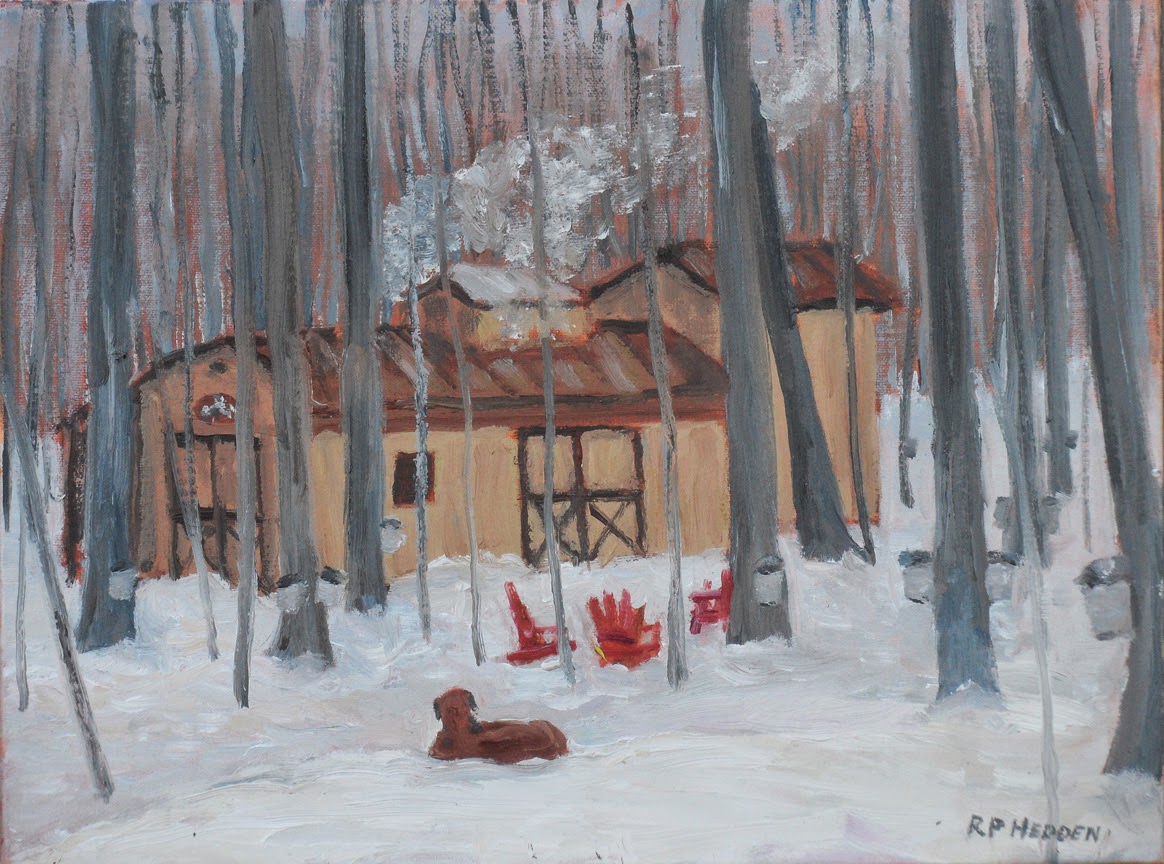I was asked to write an article on plein air painting the Indian River Lakes by the Indian River Lakes Conservancy (IRLC) for their next newsletter. The text and pics submitted are below. By way of background, there are eighteen naturally formed lakes by glacial erosion and melting. They all feed into the Indian River which in turn feeds into the St Lawrence River, 1000 Islands region. Two are private and the rest have access provided by a Town or NY State Department of Conservation (DEC). The lakes are great for fishing and DEC has classified them in three groups, shallow productive, deeper and clearer and deep cold water. The lakes stretch out for forty miles in a NE direction , in parallel direction to the St Lawrence River. Here is the article and pics:
Plein Air Painters Thousand Islands region (PAPTIR) was founded in 2009 to foster painting outdoors in the region, a practice that was spreading rapidly across the U.S. In July 2010, the Thousand Islands Land Trust (TILT) sponsored a canoe/kayak trip on Grass Lake. Some of us PAPTIR painters participated in the event which started the love affair with the Indian River Lakes (IRL) and the Indian River as great painting sites. However, there are three P's required for a painting site: Point of View, Parking, and Potty. The third P is hard to find on the the IRLs. At many of our other painting sites the nearest gas station or restaurant meets the third P requirement. In July 2011 TILT and IRLC jointly sponsored a canoe/kayak trip on Millsite Lake. Some of us arrived early and painted from the DEC launch site (it has the third P). My painting of Millsite from the launch area is below.
 |
| Millsite Lake 9 x 12 oil |
In 2012 and 2013 Cindy and Phil Gentile hosted us at Grass Lake. Generally participants arrive at 9:00 to 9:30 a.m. with a packed lunch, assemble at 1:00 p.m.to eat and socialize and then return to painting and depart on their own schedule. However, Phil likes to cook and entertain and they showed us a great time. Most times when we are hosted , PAPTIR participants bring a dish and beverage to share and the hosts party with us. Below are paintings by Lori McCall and Jan Byington done in 2013 from the Gentile's dock. Lori's "Across The Lake" zooms in while Jan's "Grass Lake Shoreline" is a broader view, illustrating two different artistic interpretations of the same scene. Also pictured are Lori and Linda Palmer painting and Jan (left to right) setting up her easel
on Gentile's dock.
 |
| Across The Lake By Lori McCall |
 |
| Grass Lake Shoreline BY Jan Byington |
 |
| Lori, Linda Palmer, and Jan |
When at a lake site it is nice to have a kayak as it offers the opportunity to seek more " Points Of View" or get around to take photo references for studio paintings. Below is a pic of Jan's two person kayak which I often coax her into bringing.
Of the 60 artists on the PAPTIR email distribution list about 20 have painted at one time or another. Others tell me that some day they will make a paint out or don't reply to be removed from the distribution list. Typically a paint out is attended by five to 7 artists. Black Lake (the largest) is another Indian River Lake we have painted at while participating in the Morristown Public Library Plein Air Fest in 2013. We have also painted twice each at the Indian river at Theresa and Philadelphia N.Y.

We are looking forward to the development of Boyd Pond (and planned portable restroom) as it might also offer some painting views of Lake of the Woods. In doing some research for this article I reviewed a wire bound booklet "Exploring the Redwood Lakes", that I have had for some time. I found some enticing photos of Butterfield Lake, Crystal Lake (Campground) and Sixberry Lake with notations that the all important restroom is available at them, but not at the other five Indian River Lakes included in the booklet. I still have to drive there and check out the Point of View so that my participating artists don't get disappointed.

















































